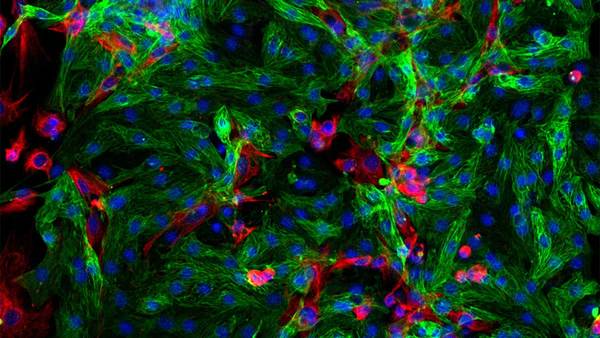
As part of a new study, researchers at the University of Notre Dame aim to create a more optimal computer network for solving complex problems — using heart cells.
Real-world issues, such as managing the U.S. electricity grid or allocating resources in the event of a disaster, all demand optimal solutions that can recognize and process spatial and temporal information.
Conventional hardware used to solve these types of problems today consumes significant energy and time. Digital systems process information sequentially — running through every possible option, then comparing those options for a result that can be still be sub-optimal.
“Cardiac cells are natural oscillators,” said Pinar Zorlutuna, principal investigator of the study and associate professor in the Department of Aerospace and Mechanical Engineering at the University of Notre Dame. “They beat spontaneously and, when coupled, they can synchronize to a locked, steady frequency. What we want to find out is if we create a network using these bio-oscillators, will their natural spatio-temporal dynamics be able to solve complex problems optimally, in less time and using less energy than silicon-based digital computing hardware?”
The National Science Foundation in partnership with the Semiconductor Research Corp. recently announced it would invest $12 million in new research in the field of synthetic biology, through a program called the Semiconductor Synthetic Biology for Information Processing and Storage Technologies (SemiSynBio). Zorlutuna’s study is one of eight projects chosen for an exploratory grant as part of the program.
“Silicon-based devices provide high-precision, high-accuracy computation, but they burn a lot of power,” said Suman Datta, co-investigator on the project, Freimann Chair of Engineering and professor in the Department of Electrical Engineering at Notre Dame. “When it comes to large, complex problems, we settle for a sub-optimal solution. We don’t have a global solution. We’re not talking about high-performance computing here with these networks of bio-oscillators. We’re talking about a task-like constrained optimization solver where we are trying to recognize a pattern using spatio-temporal dynamics — by mapping a given problem to the oscillator network.”
Humans are good at processing spatiotemporally distributed analog data — picking up key visual or behavioral cues during conversation, processing a sequence of events, such as understanding a range of contexts.
What is innate for human beings is difficult when it comes to artificial intelligence or machine learning. The image of a car upside down, for example, is confusing for digital hardware to still classify it as a car. “It hasn’t been trained to look at the object any other way than with wheels always in touch with the ground,” Datta said.
While previous research has explored the effectiveness of using DNA, gene or protein circuitries in biocomputing, Zorlutuna said the rate of information processing using those components is inherently slow. The research team, which includes Datta, Hsueh-Chia Chang, Bayer Professor of Chemical and Biomolecular Engineering and concurrent professor in the Department of Aerospace and Mechanical Engineering at Notre Dame, and Nikhil Shukla, assistant professor of electrical engineering at the University of Virginia, will use specialized polymers to connect the cells and build an interacting system.
Engineers could try to mimic the biological oscillations of cardiac cells with conventional silicon circuits, Datta said, but it would take a large number of devices to do the work of a single cell.
“In addition to solving the need for extensive data processing of computationally hard problems,” Zorlutuna said, the research “could lead to a better understanding of electrical communication in muscle cell networks with potential applications ranging from biorobotics to understanding and treating muscle disorders.”
Contact: Jessica Sieff, assistant director of media relations, 574-631-3933, jsieff@nd.edu
Originally published by at news.nd.edu on August 21, 2018.